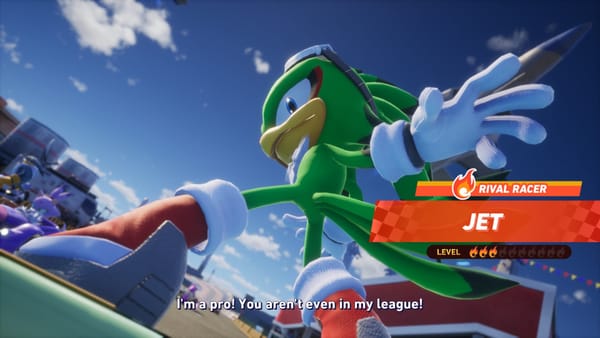Unfortunately, GoHands' Momentary Lily is the boring kind of bad anime
...like a conversation between robots programmed only to spout catchphrases like Pokemon babbling out their own names at one another.
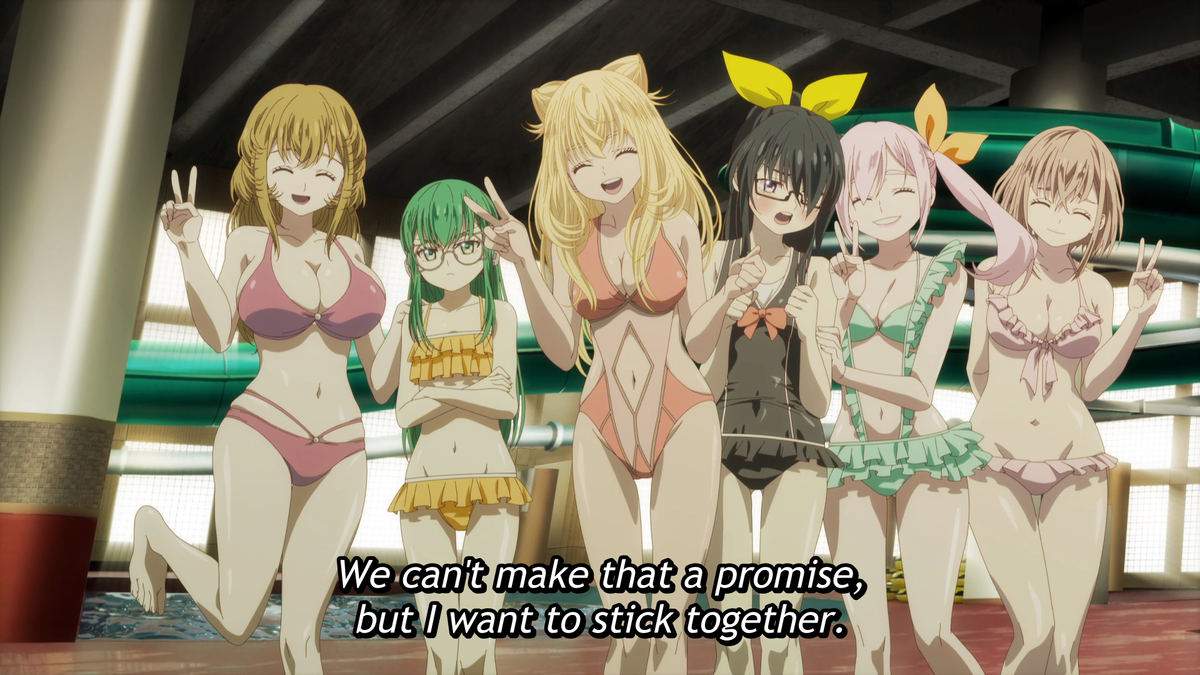
(This piece will necessarily contain spoilers for the big early twist of Momentary Lily, but I don’t recommend you watch Momentary Lily in the first place. It will also necessarily spoil that one famous scene from Madoka Magica. It's the same twist. I also tell a few small lies to avoid spoiling the ending.)
Critics love Studio GoHands.
No, I’m serious, we do. Nobody gets more excited about a new GoHands original anime than people who analyze and obsess and talk about the medium.
Great works inspire; they possess the pen. We cannot stop talking about them. In their greatness, they challenge us to step up and give our best effort in return. They make the job worth doing.
The toughest review is the ordinary bad work, the dreck without character: bland, me-too-I’m-the-strongest isekai, or dull magical-girlfriend romcoms featuring neither rom nor com. It’s difficult to say anything new about works this derivative, and no close reading yields fruit because there frequently isn’t an original thought in these works’ entire bodies.
But we really love fiascoes, disasters. Disasters are juicy, they’re nuanced, they’re deep. When a creator’s pure, singular, norm-defying vision is actually just terrible, when so much is wrong with the product that it’ll take thousands of words to pick at everything… as a critic, that’s exciting.
Critics love Studio GoHands.
The Gamesoft Robo Fun Club is a solo labor of love that depends entirely on paid subscriptions from readers to exist. If you enjoyed this piece and you'd like to see more, I'd love to see you become a regular or paid subscriber. Paid subscribers get exclusive posts. Thanks for reading the pitch and hope to see you subscribe!
A little background or; why do critics love Studio GoHands?
This relationship didn’t start out that way. I quite enjoyed the first film in GoHands’ adaptation of Mardock Scramble. The studio’s signature garish video game-like CG color palette actually fit the cyberpunk world quite well, and I left wanting more. (Sorry, even I don’t know where that review is anymore.) The K series came and went, and seemed to me to have been fairly popular.
But Mardock Scramble was an adaptation, and when people speak in silent horror of Studio GoHands, they’re really talking about their original works. And to slim it down even further, they’re really talking about the creative duo of animator/director Shingo Suzuki and writer Tamazo Yanagi.

In 2017, the legendary fiasco Hand Shakers struck anime nerds out of nowhere with the force of a civilization-ending meteor. Clearly intended to be a big hit, Hand Shakers was a generic shonen battle story performed in an unquestionably unique and inimitable style. The series thumbs its nose at anime convention and insists upon GoHands’ trademark vision: A maximalist, lavishly ugly clash of over-animated 2D characters and cheap-looking 3D effects and scenery, unreadably chaotic action scenes, excessive camera movement and weird angles for their own sake. The GoHands dream girl’s individually animated strands of hair wave in the wind like bundles of gleaming straw, and her helium-filled breasts jostle against physics and nature itself. If you let go of her hand, she will die.
(It’s worth noting that Hand Shakers’ 3D effects were so heavy that they would break Crunchyroll's low-quality streaming video compression, rendering the show’s biggest action set-pieces literally unwatchable. This did not help perceptions at the time.)
Even looking past the art and directorial style, Hand Shakers appears to deliberately do everything possible to be not just different but also wrong. With a story and premise it doesn’t even seem to care about, it quickly became one of the most notorious anime TV series of the last ten years. To describe it any further would turn this into a review of Hand Shakers instead of a review of Momentary Lily. I am getting there.
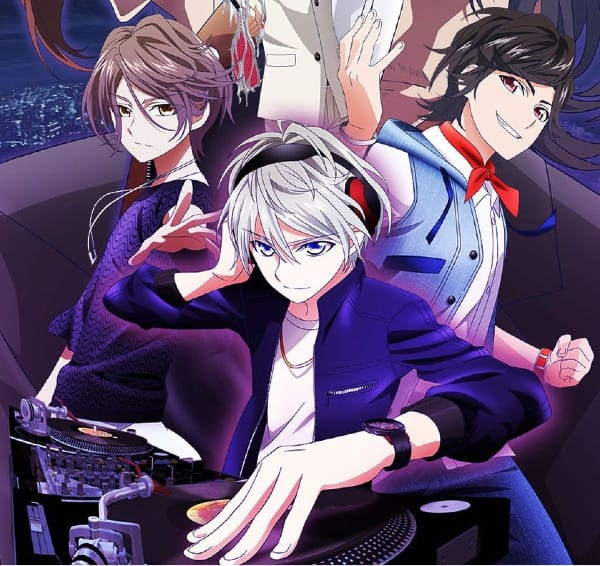
To critics’ and bad anime enthusiasts’ delight, GoHands has indicated that they are quite married to this style. They made a stealth sequel, in fact: it was titled W’z (pronounced like the English word "wise") and initially sold as a different series, so as to avoid the stink of a notorious bomb. (W’z reveals its status a few episodes in, and it is in large part about how good Hand Shakers was, and how beloved its characters were.) You gotta understand: whatever critics think of this style, however we tear it down and however otaku enshrine them in memedom’s encyclopedia, GoHands is committed to its approach. What we see on the screen is exactly how they want it to be, and that’s what makes their stuff so fascinating as it misses the mark.
So when I saw that first teaser for Momentary Lily, when that character’s pointlessly animated hair went flying all over the screen in every direction, I said “Let’s fucking go!!”
So yeah, it's pretty bad
Momentary Lily attempts to grab on to several modern anime trends: crossing “cute girls take up a hobby (cooking)”, “cute girls surviving the apocalypse”, and “cute girls in love (yuri, which by the way is both the Japanese word for “lily” and the name of the protagonist)”. What the series does not bother to do is attempt the earnest connection with the audience that makes titles like Yurucamp, Girls’ Last Tour, and Yuri Is My Job work in the first place. In a word, Momentary Lily feels insincere.
In a post-apocalyptic Japanese city, video game-like monsters (in one of the series’ first “oh, fuck you” moments, the girls call them the Wild Hunt, cribbed from The Witcher) have exterminated most humans. They’re supposed to erase people from existence, but sometimes they mutilate them or reduce them to bloody messes; the show goes with whatever is more shocking at that moment. The only people we know are left are a team of young girls who wander the barren city together, surviving on instant noodles and dispatching Wild Hunt with magical weapons and typical anime superhuman strength, their cool long coats flapping in the wind as they run on the sides of buildings and stuff as a matter of course. In the first episode, these girls link up with a cooking-obsessed amnesiac who can’t bear to see them eating so badly, and the gang is on its way.
The first problem with this “cute girls in love, cooking and fighting monsters in the post-apocalypse” anime is the cute girls themselves. Immediately annoying rather than charming, these stock archetypes’ personalities are contained entirely within the catchphrases they endlessly parrot.
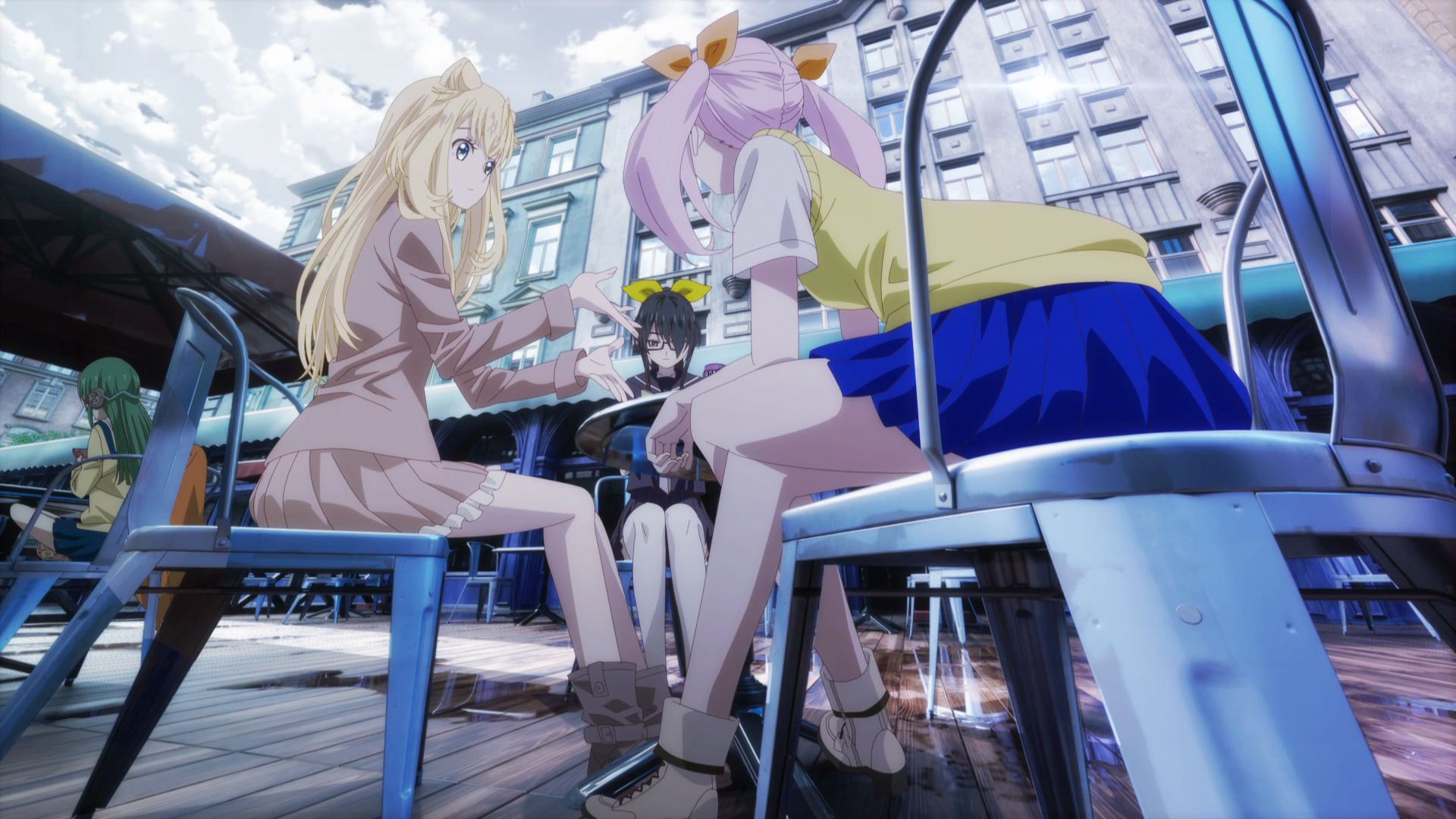
Big sister Eri’s every line of dialogue is about specifically identifying herself as a big sister and declaring that she is going to dote on someone, usually the gamer Hina. “A pearl of wisdom from your big sis” is her catchphrase. The fashionable gal Sazanka says “maji” and “yabai” three times in every sentence and only talks about skin care and shopping. Her girlfriend Ayaka, the uptight, nerdy class president type, exclaims “Guilty!” in English at random intervals, which turns out to be in reference to an in-universe light novel she’s obsessed with.
The gamer— and you’re not gonna believe this, because it’s never been done before— speaks exclusively in gamer terminology; “I need a buff,” “That looks like a boss”, and so on. Main heroine Yuri gets annoying the second fastest, as she inserts the onomotopiea “don don don!” (bam bam bam!) into most of her dialogue. And the other main heroine, Renge the cook, literally just shouts “Cooking!” (“Kappou!”) every so often. The show tries really hard to make yelling "Kappou!" a Thing.
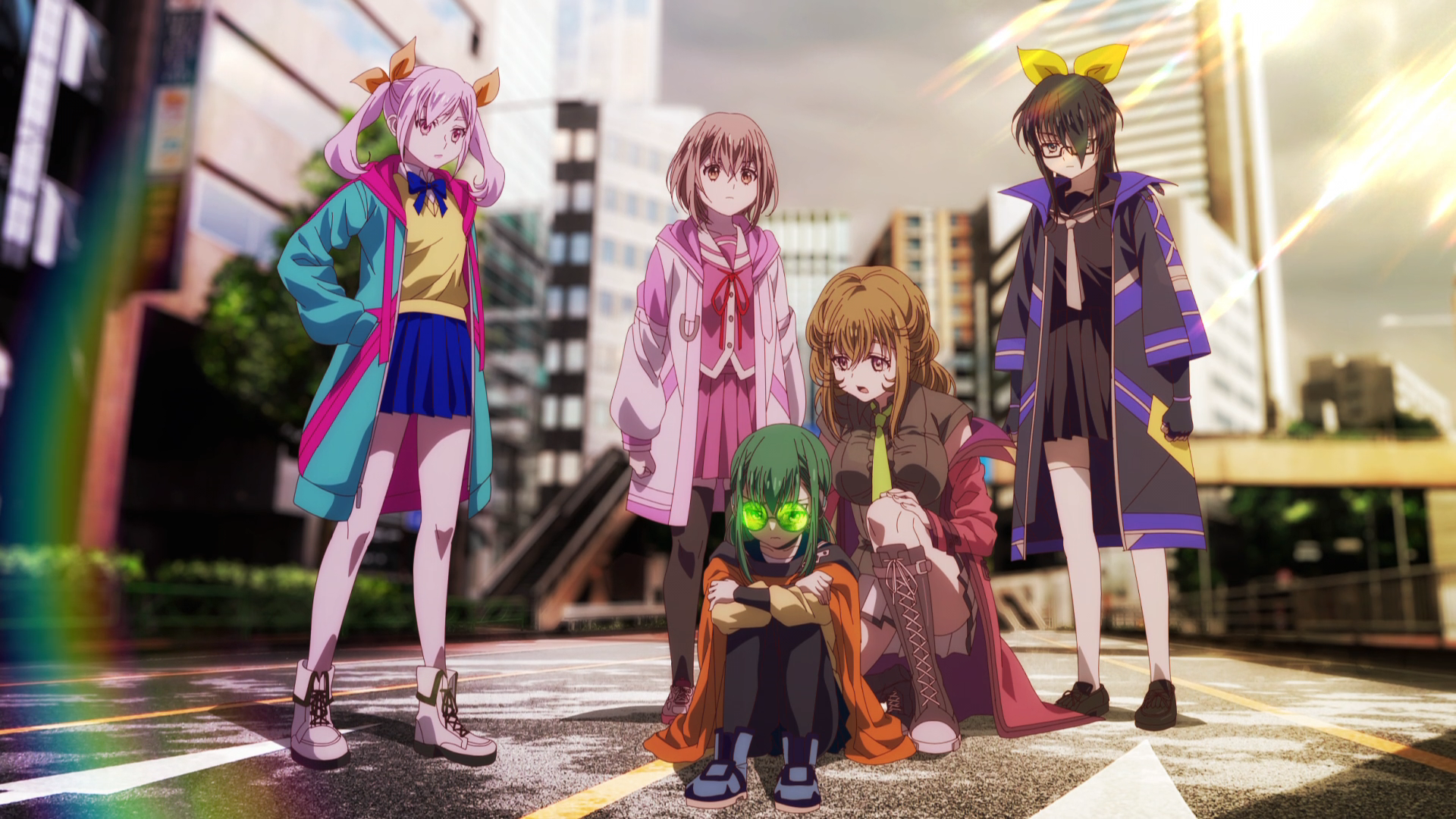
The resulting dialogue between these characters feels extremely unnatural, like a conversation between robots programmed only to spout catchphrases like Pokemon babbling out their own names at one another. You could write actual Momentary Lily dialogue— you could probably reproduce an episode script— by just stringing together those catchphrases over and over again. Guilty! Kappou? Big sis says you should cook when you’re hungry! Whoa, really? Food is maji yabai! Kappou! Guilty. Yabai. …I need a buff.
So great news if you liked the cluster of words I just typed; this is a dialogue-heavy show! The flashy and chaotic action of the opening and the first few episodes fades out of the show quickly, as it becomes apparent the show can’t deliver its trademark stylized high-effort (and admittedly pretty impressive, much more readable than Hand Shakers) action sequences every single week. As if to emphasize that Momentary Lily isn’t about the action, characters start to finish off Wild Hunt offscreen, and the series audaciously skips entire battles after building them up, including the final one.
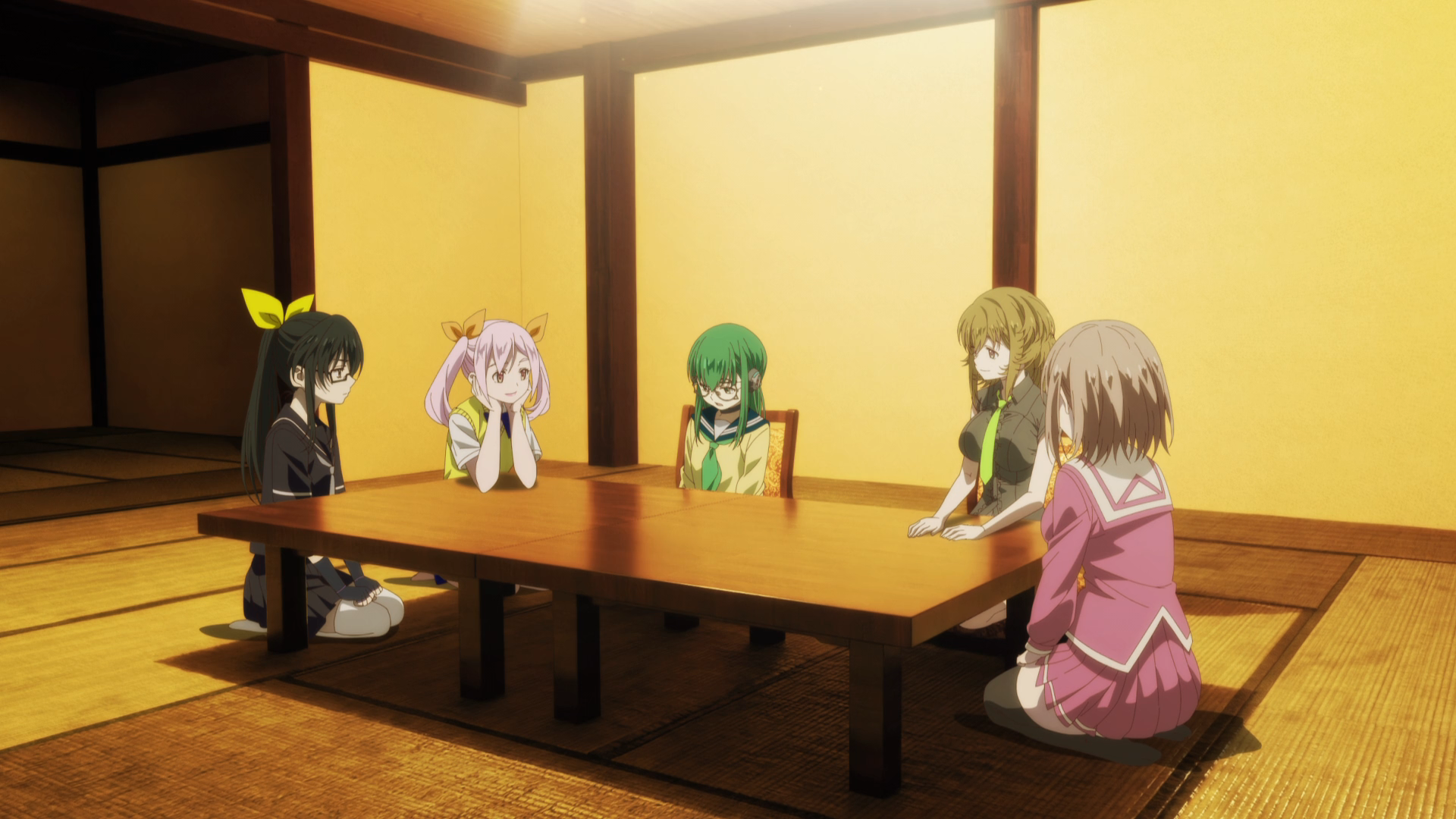
Momentary Lily’s focus is usually on the girls hanging out together, making small talk, and planning out where in the post-apocalypse they’re headed next. This material is the point of the show: not the action, certainly not the cooking gimmick, nor a sci-fi setting whose secrets turn out to be undercooked and irrelevant from the moment they’re revealed.
Rather, the girls are meant to be so charming and lovable that we want to watch them interact for its own sake.
“Cute girls do nothing much” isn’t inherently bad if the characters are charming, and it’s enjoyable to spend time with them. These criteria do not apply to the cast of Momentary Lily, who truly have nothing to them at all beyond their archetypes and catchprases. These girls make me miss even lesser “cute girls do nothing” anime like Pon no Michi, in which the characters exhibited visible personalities and even had some charm to them. (Emi grew on me.)
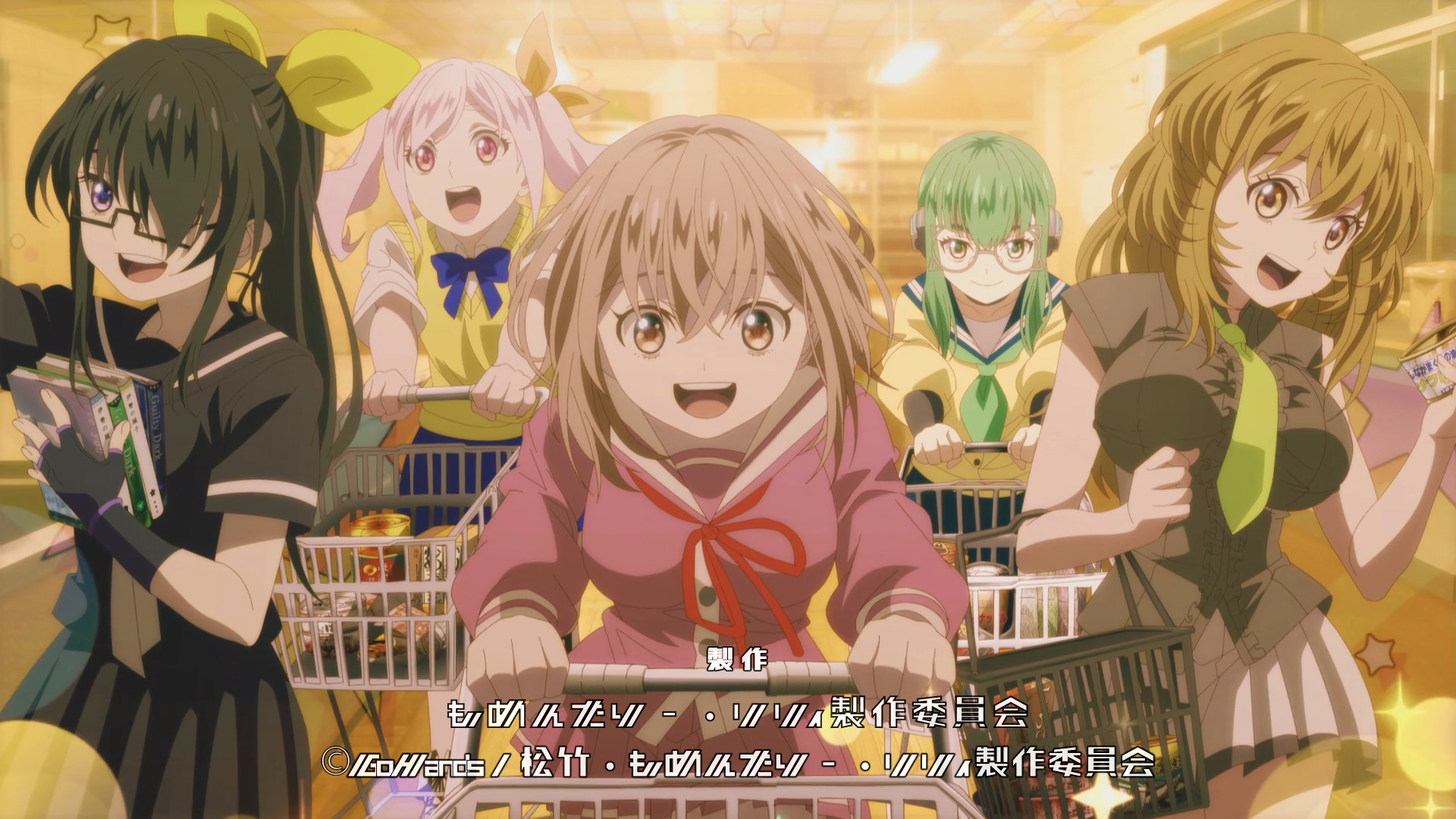
Cooking is featured in the (insane, excellent, I genuinely love it) opening sequence pretty prominently, but the show doesn’t appear to care about cooking or food very much. The idea of Renge joining the crew was that she’d cook with whatever canned or packaged foods the girls find around the ruins of civilization. Though you never actually see a single supermarket raid— nor whatever baggage they’re carrying all these cans and packages in— every week the show goes to a one-minute “cooking corner” like you’d see in Delicious In Dungeon, where we get to watch the preparation step-by-step.
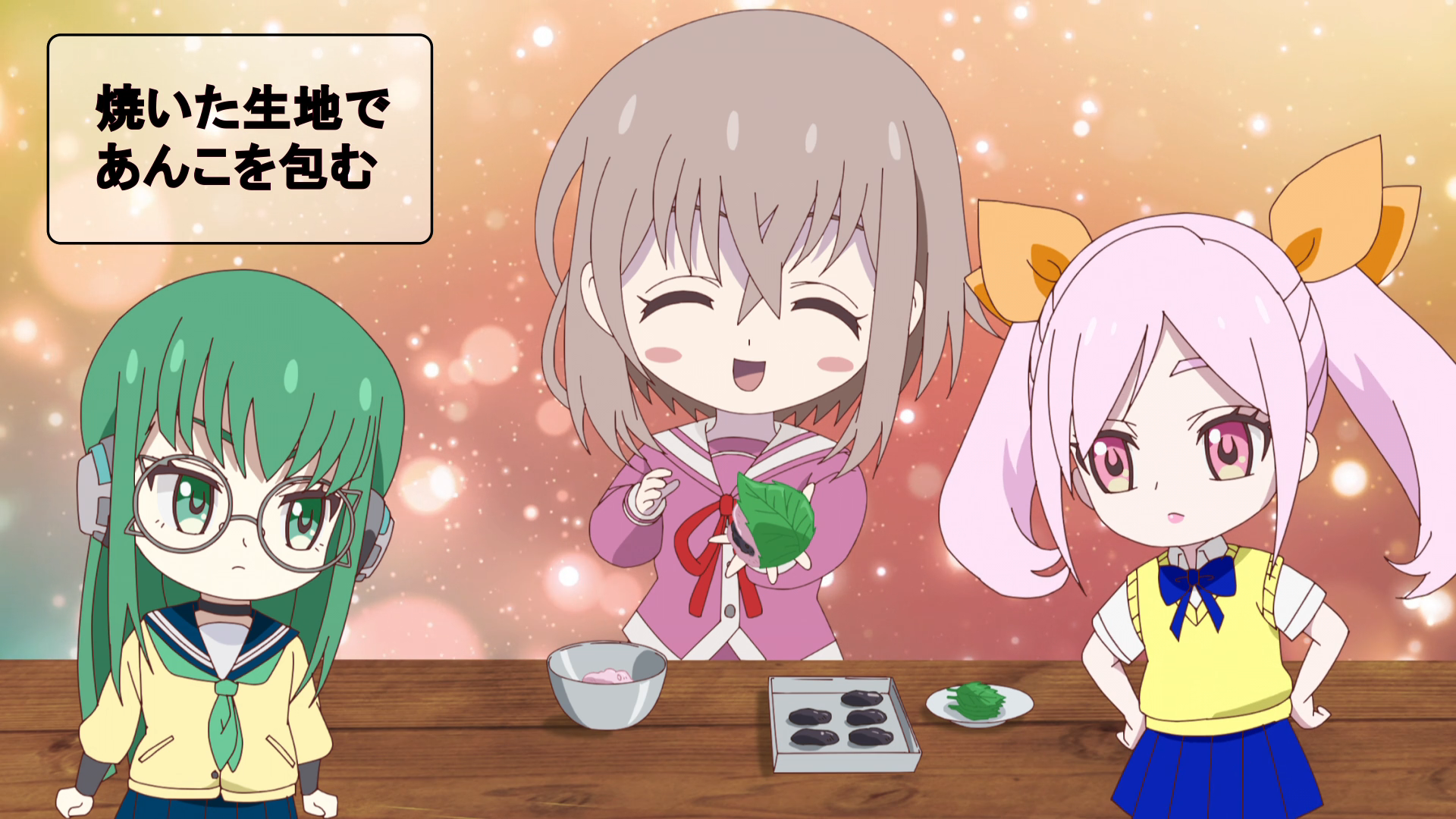
After the first episode, these super-cheaply animated sequences fit less and less into the world. A big reason the scenes stop working is that the show stops showing the girls eating and enjoying the food; often the food never even appears in the scene. Instead, the cooking sequences cut directly to the after-meal “gochisousama!” the moment this week’s meal is completed, and the characters move on completely. As such, many of these 90-second segments feel like completely disconnected pieces dropped arbitrarily into the episode rather than vital moments that punctuate actual moments in the girls’ journey, represent the trial they overcame, or just evoke the warm fuzzy feeling of sharing a meal with people you care about (like, again, Delicious in Dungeon). So I guess this show’s not about cooking or food either. But that was this show’s gimmick! What the hell is it about, then?
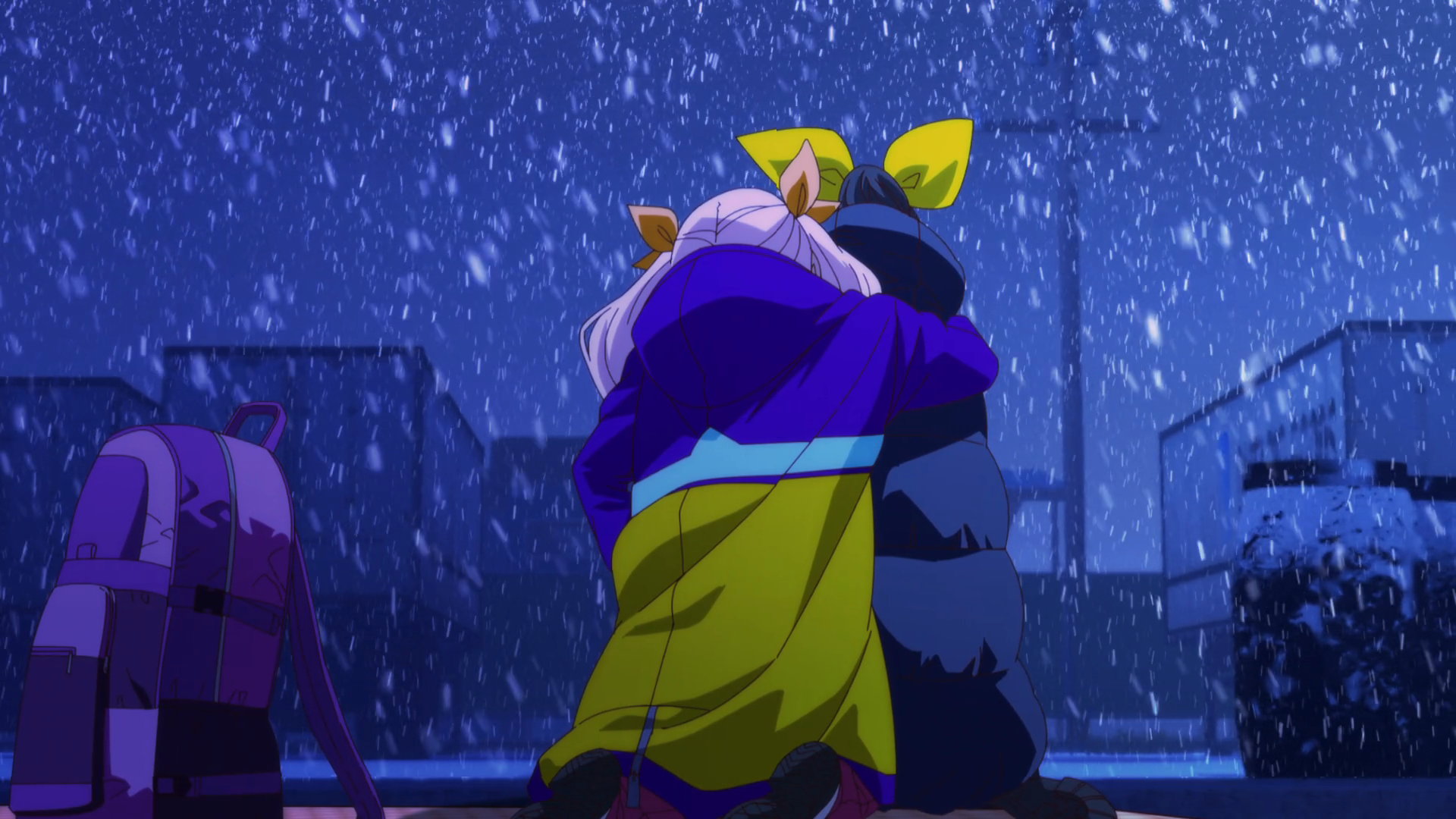
Is it about character relationships, you know, the “Yuri” of it all? …Uh, kind of? There are episodes early in the run that specifically spell out which girls are meant to be couples, and offer some brief moments from their past. That being said, those character relationships are pretty much static: the big sis dotes on the obliviously needy gamer girl, the gal supports and teases the repressed class pres, and that’s really it. The two episodes about these relationships only fill in a little bit of background we could have guessed ourselves; there’s no growth or change. Yuri fans– the people specifically targeted by the title– have little to munch on here.
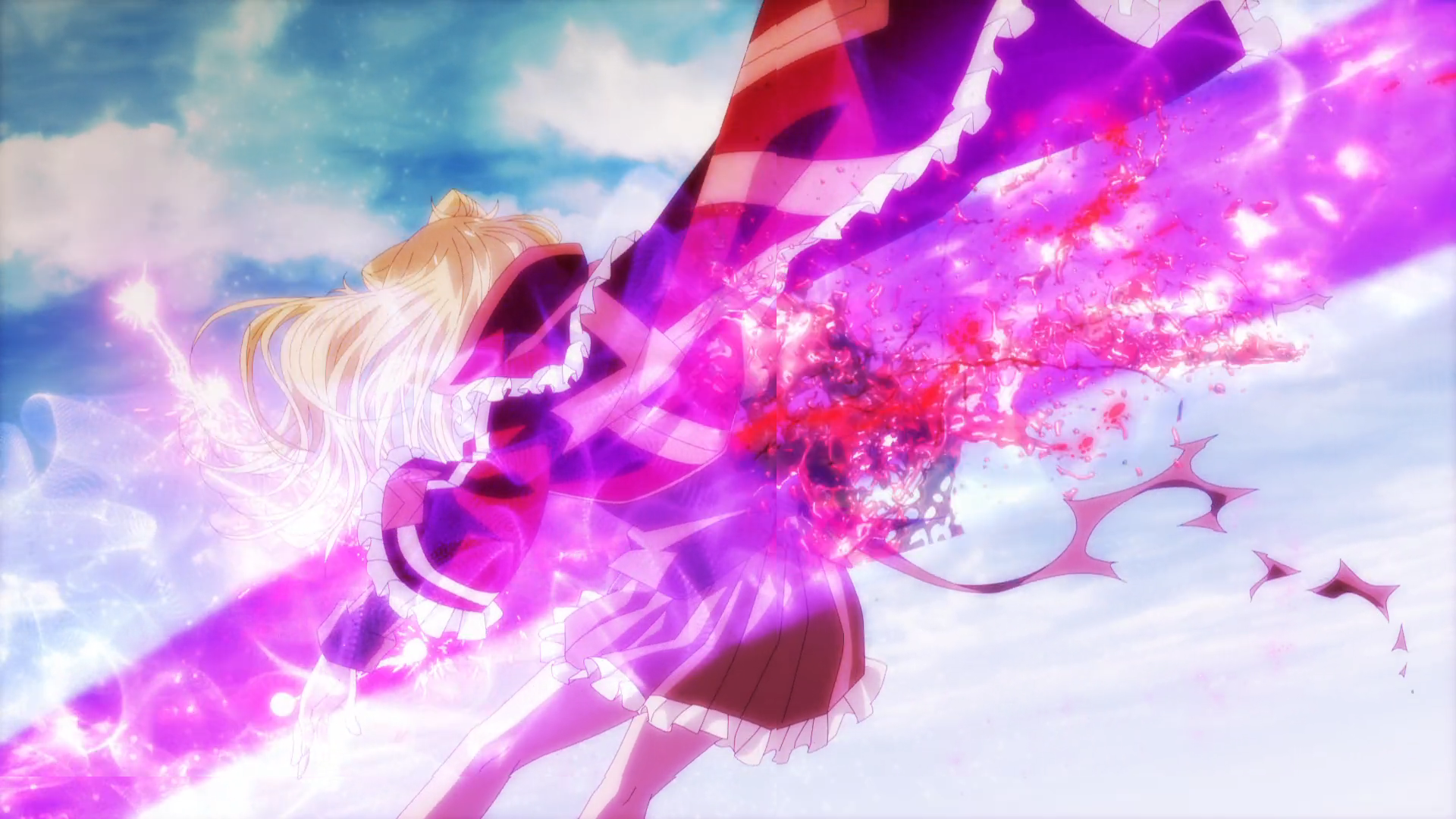
Here’s an innovation award I will hand to Momentary Lily: it accelerates the common anime shock tactic of a “third-episode surprise” to a new level by brutally killing off its main character Yuri— the real main character, the clear leader of the crew, and also the most irritating character by a mile, don don don— in the second episode. (Hence Momentary Lily; Yuri isn’t around for long.) It even goes in first with a fakeout making you think it’s going to rip off Madoka Magica by killing off big sis Eri, complete with an ugly near-death breakdown which displays, solely for shock factor, more sincere human emotion than we ever see out of any character in this show. But Yuri rushes into save the day, and at the moment we’re sure she has, Yuri's premature celebration gets her gut blasted open with a laser beam.
(Woshige! Why are you standing up?!)
There is an implication, as the girls weep over the grave they’ve dug for her, that title character Yuri will cast a long shadow over the rest of the series to match her brief screen time. Perhaps the real heart of this show will be the story of how the team copes with losing its leader. That's how a story like this would go, right?
But that doesn’t happen either: like everything else that happens in this show, two episodes later nothing much has changed, and Yuri’s death is just about out of mind. The girls move forward exactly as they were, don don don, through their enemies, towards survivors, and eventually into a Wild Hunt base, leading to a lame sci-fi explanation of their predicament that I will save for the spoiler space.
(Following a certain unspoken rule of pretty-girl anime meant for its more insecure straight male fans, the survivors are only women. The only man seen in Momentary Lily is the empty high school uniform of a boy erased by the Wild Hunt.)
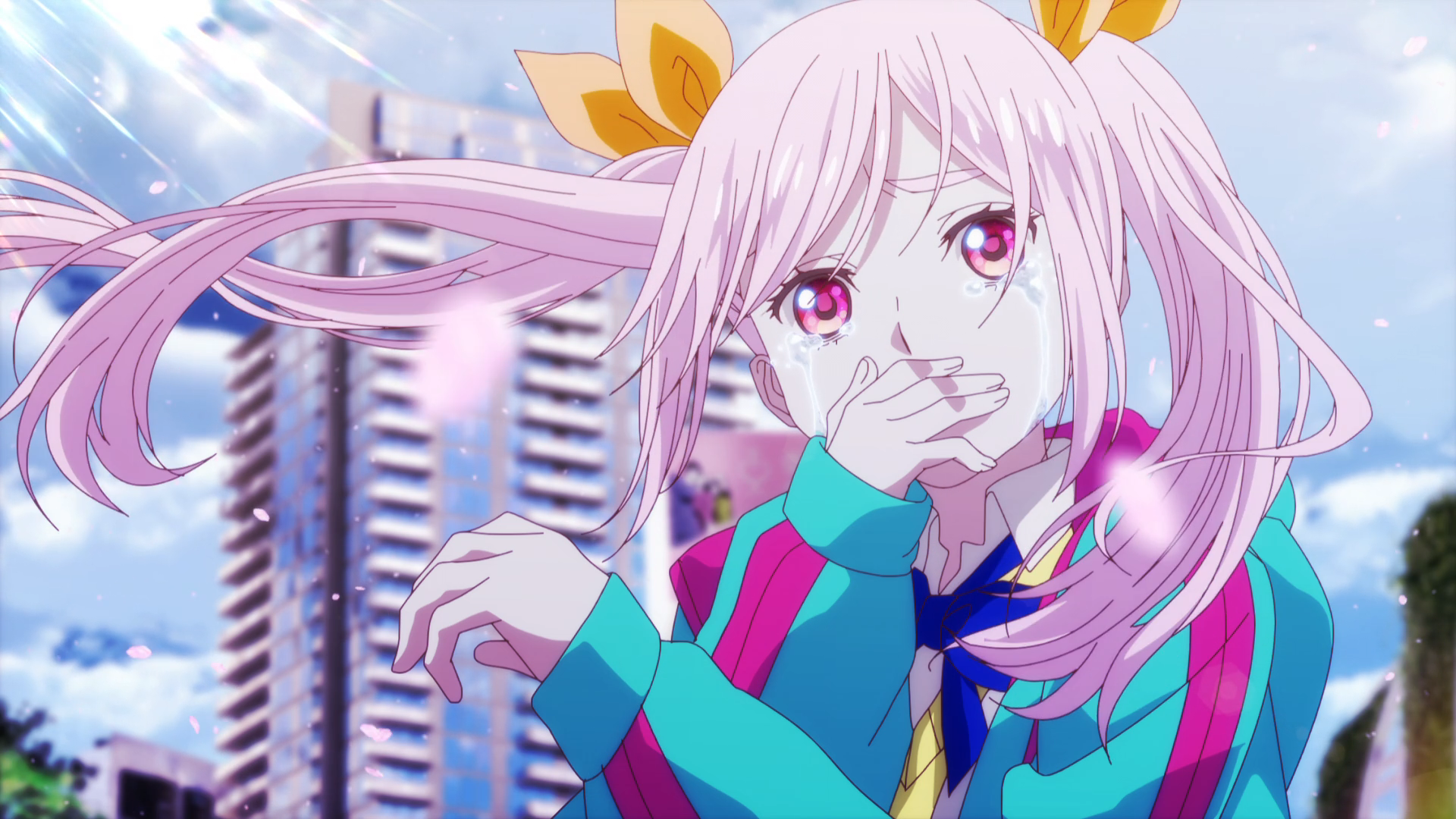
In its emotional moments, Momentary Lily has the audacity to repeatedly ask us to cry for characters we don't know anything about, who we don't care about, who are actively irritating. At the very end, in a desperate moment, the girls cry, wail and scream about the things they would have done had the world not been this way. But the characters are so flat that all they can come up with are the same god-damned things they always say: the gal wants to go shopping, the class president wants to read her stupid fucking light novel, the gamer wants to game, and the big sis wants to, I kid you not, "do more big sis stuff". This show wants you to shed tears over soggy cardboard, and it's genuinely insulting.
Ultimately, Momentary Lily feels cynical. It grabs on to random trendy elements and forces them together, but it doesn’t present any of them— except for the rare bit of action, and the girls’ bodies— with any great passion or interest. It delivers a minimum. The only place it doesn’t deliver the minimum is when it’s drawing characters “breasting boobily”, for which it has drawn some comment, and likely its most sincere fans.
The Wild Hunt would never post sexy videos at the pool
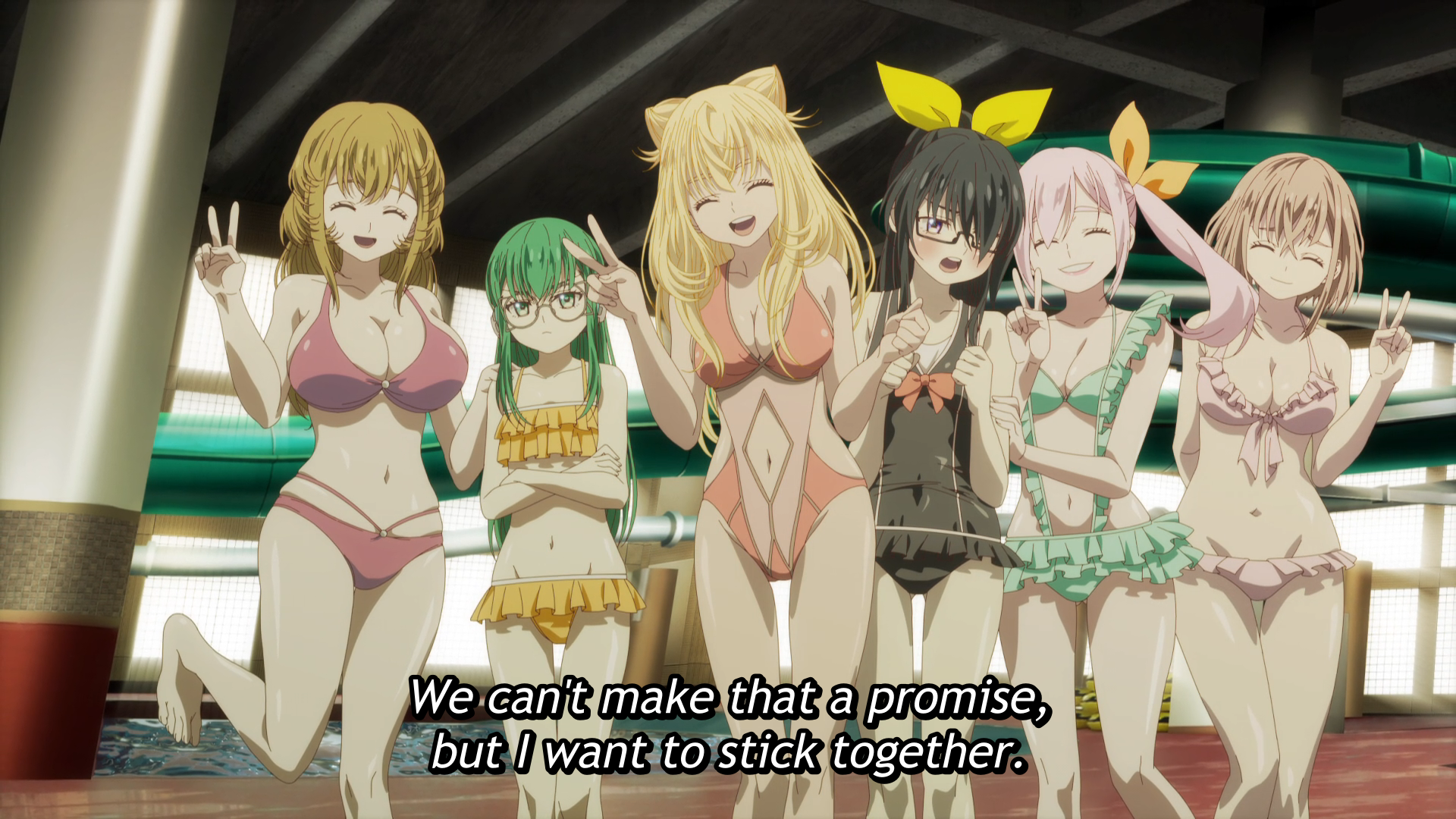
But even Momentary Lily’s fanservice feels forced and unsexy, consisting as it does mostly of one character's sentient helium-filled breasts flying to and fro in an anime girl uncanny valley every single time she's on screen. I was worried that big sis Eri might slap herself in the face every time she ran.
In a surreal swimsuit episode, the girls arrive at a fully functioning water park and decide they must post “sexy videos” on the in-universe Instagram in order to prove that they are human, because “the Wild Hunt would never take sexy videos at the pool.” Never mind that in our age of AI spam, we actually know for a fact that “sexy videos at the pool” are exactly what a malevolent AI-driven killer robot would post to convince people it was human and lure dumb humans into their own deaths. It’s like you can see the horny old men running on hamster wheels inside of the characters’ heads.
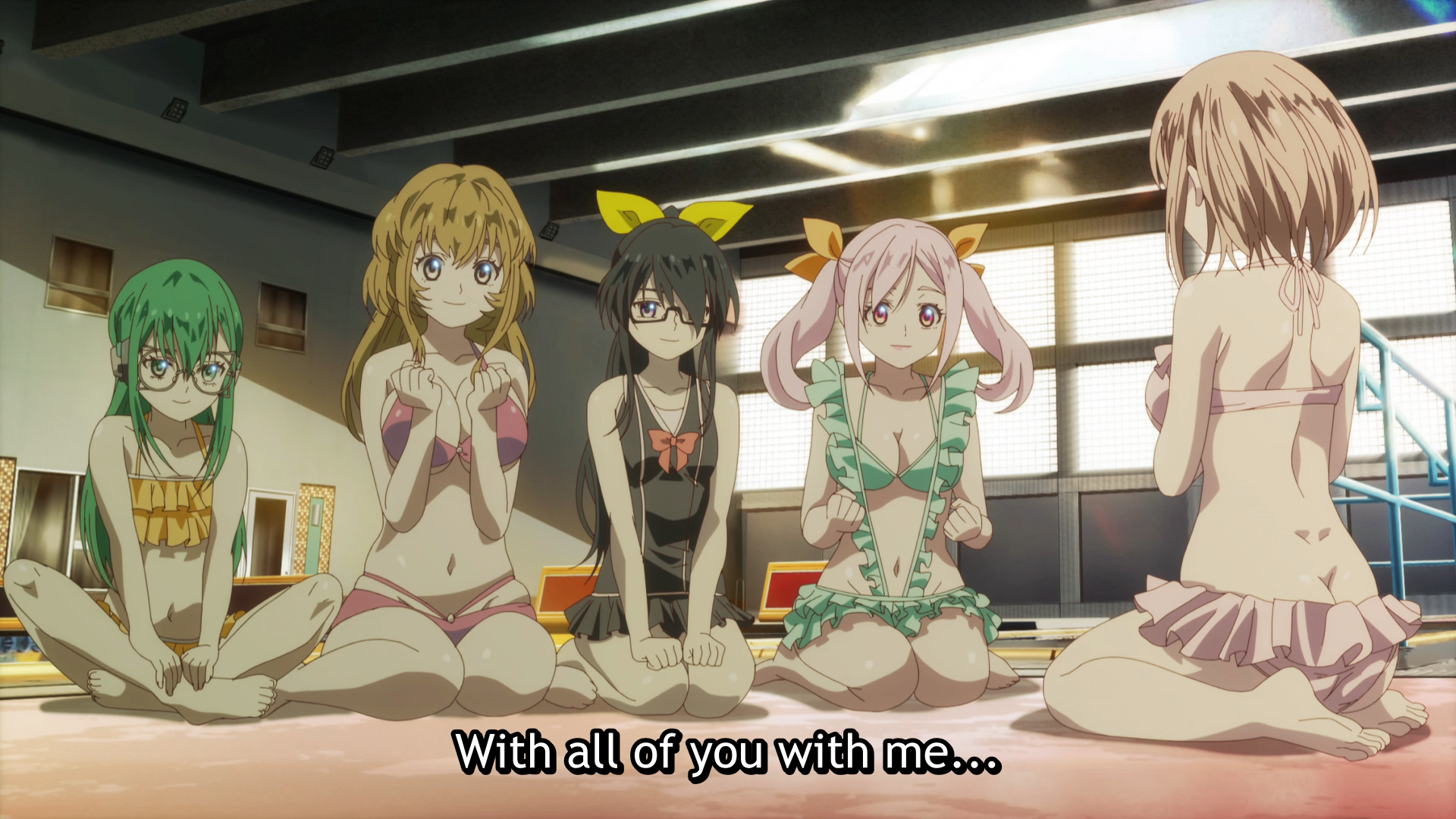
Speaking of horny old men, I want to note that even when a shonen romance polycule heads to the beach, the swimsuits the girls choose— however revealing— tend to reflect their personalities to some degree; you can believe they chose them to wear, and that’s part of the appeal. Momentary Lily does not have that kind of awareness of character; the girls show up at the water park in remarkably porny frilly bikinis sporting open ass-cracks. Finally on a subject it can really get its teeth into, the direction gets really experimental with its camera angles in this episode. A low-flying view of Eri planking (and, not coincidentally, moaning from exertion) is perhaps the most passionately animated cut in a series with plenty of those.
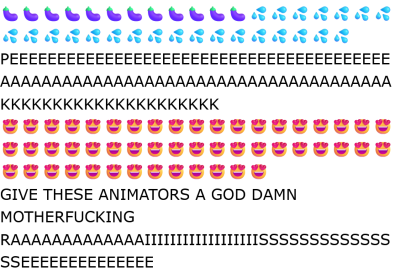
And the scene comes off like a space alien animated it as an anatomical study of a human's fat deposits. The girls never get in the pool until the last moment (some still frames), because the water is CG. The show remembers the dead character for a moment, but only to think of what kind of swimsuit she'd be wearing. Three episodes later the girls come across a fully maintained and operational hot spring resort, as though the show recognizes it needs to reach a nudity quota. Like I said, cynical.
So Momentary Lily is quite bad, and I just wrote three thousand words about it. You know why? Critics love Gohands. Momentary Lily misses the mark in so many ways and places that I felt a burning need to describe them all to you. That's my problem. But if you're watching anime for entertainment and not your own personal self-taught academic interest, miss Momentary Lily. Even Hand Shakers was more fun than this.
Next time is a quick spoiler space for the parts of Momentary Lily I didn't want to ruin, namely the lore and ending. This one is long enough, after all.



